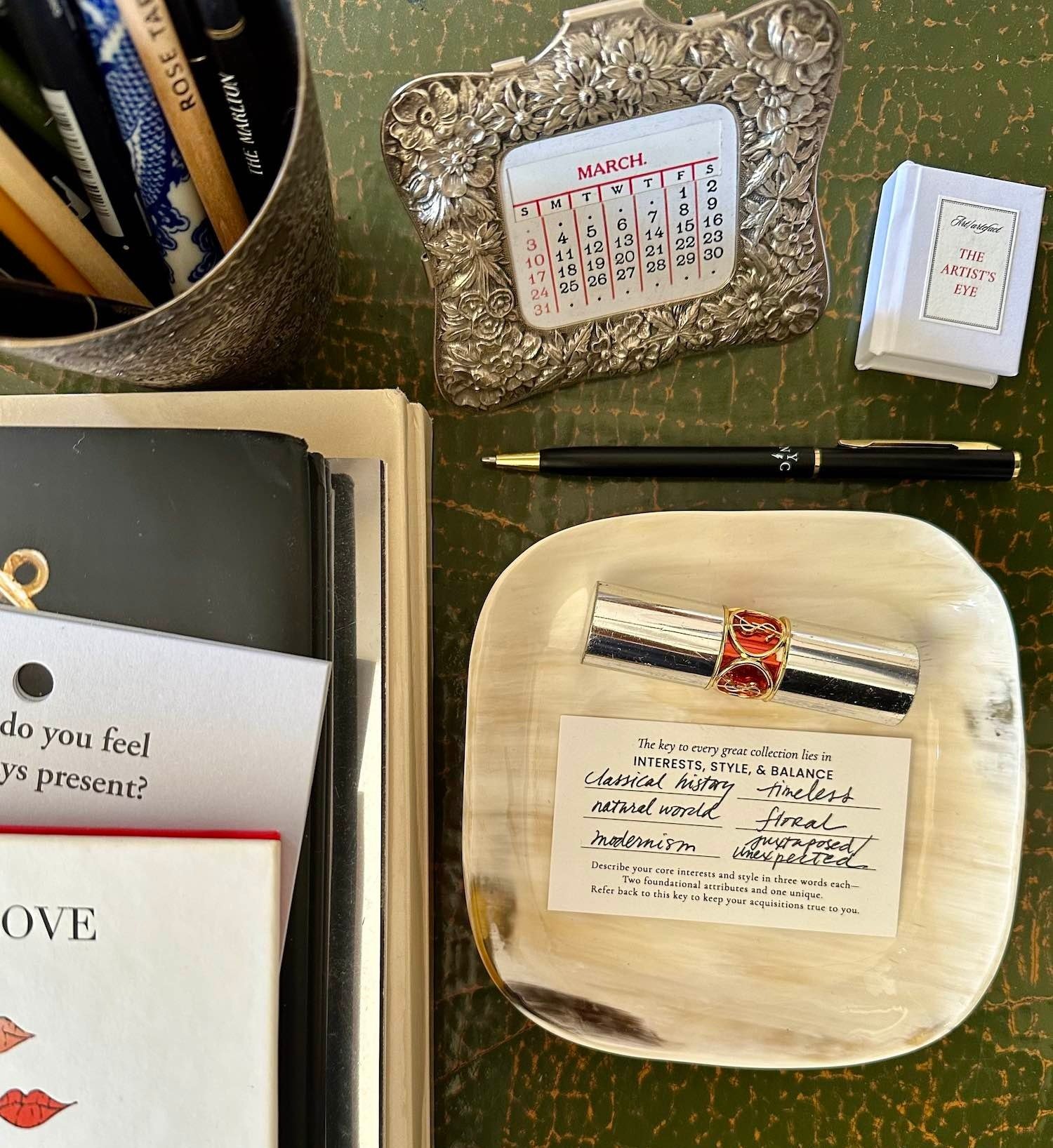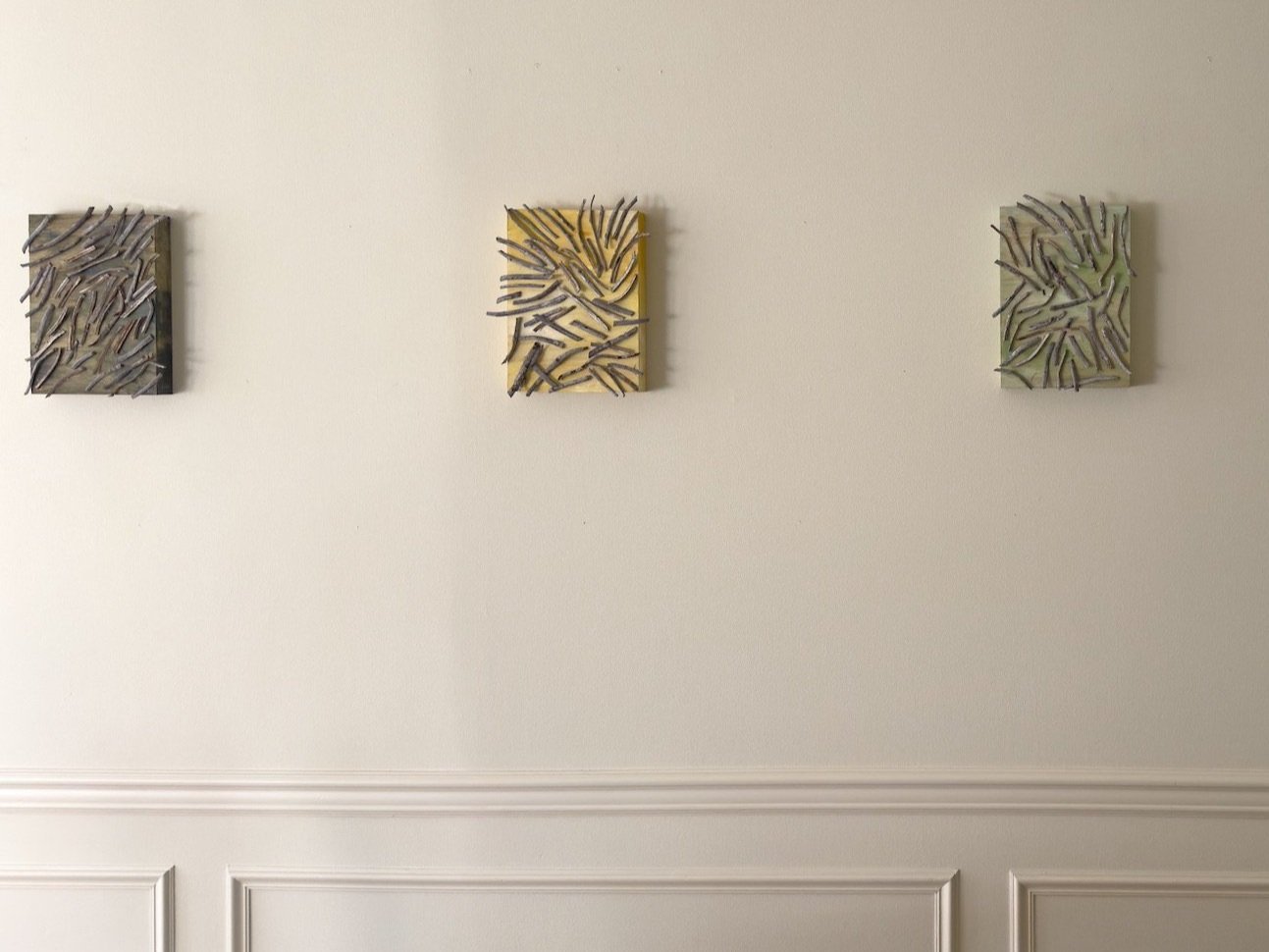IN KIND - Finding Your Personal Style
a three-word trick to figuring out your personal style, courtesy of art advisor and interior designer Audra Kiewiet de Jonge.
in conversation with leah Melby clinton
When’s the last time you had a proper phone call? What is it about talking on the phone without seeing a face that can feel so focused in and intimate? Last week, Leah Melby Clinton, the co-founder of In Kind Magazine rang me up to chat about personal style and collecting.
While we were chatting about everything from defining what is taste to the clothes we love to wear to art collecting and connoisseurship, I was just loving being on the phone again having a conversation that felt personal and between friends. It made me think of an Andy Warhol quote from a book in my girls’ library
“You should have contact with your closest friends through the most intimate and exclusive of all media—the telephone.”
Below is an excerpt from our conversation that focuses on a business card I created for a talk I gave about collecting last fall.
*If you’d like to read the full interview, send me an email audra@artartefact.com and I’ll forward you the In Kind newsletter. Leah and her co-founder Hannah Weil McKinley are two very talented women with incredible taste fearlessly engaging topics relevant to women as creatives, community pillars, founders, friends and mothers. I’m honored to be featured, and thrilled to receive their weekly newsletters as a subscriber.
Warmest,
Audra
Leah: Your work is in the art world, but there’s such a corollary with fashion. Your business card says “every truly great collection is a form of portraiture—it reflects the person behind it” and those words could 100 percent be about a wardrobe.
Talk to me about how you direct clients. I think about your business card all the time, and it’s still on my desk. It instructs people to “describe your core interests and styles in three words each: two foundational attributes and one unique.”
What does that mean exactly? And then when someone does it, where do they go from there?
Audra: When I was making that card I was trying to distill a much larger get-to-know-you conversation I have with clients. These really fascinating, accomplished people are at a position in their life where they’re ready to start collecting art, they want to do it, but for whatever reason they feel like they don't know where to start, what you “should” collect. They don’t know what they like; they feel intimidated by expressing a critique or preference over something they feel they don’t know anything about.
Art is taught to us in the wrong in way, in the sense that it’s [not presented as] an extension of who we are. It helps us as human beings. The reason art exists is because people have so many layers and incredible abilities to make connections between things—things that have no function other than [being] an awesome thought. I want [clients] to feel that’s something they should access and have as part of an enriched life.
The idea of writing down three words—it sounds simple, but instantly my brain starts overthinking it.
Most people haven’t thought about their personal style very much. We kind of know what we like, but a lot of us aren't that confident in how we dress. Use a scratch paper, write down a bunch of ideas, and see what the bigger things are that emerge from that, sort of like a brainstorm session or an association session.
I was thinking: What do I like? What’s the broad category? If I was to sweepingly express that in one to two words, I’ve always been interested in: classical history; historic old things; culture. And the natural world: admiring the seasons, admiring flowers, the shapes of leaves, the incredible geometry and beauty and miracle that is the living, breathing environment. I find infinite inspiration there.
For me, what makes a collection or style really sing is balance and juxtaposition, and I want that last [word] to not necessarily be something you’ve always loved or been drawn to but is a foil to those two foundational qualities. It adds a new dimension or has a conversation that is unexpected.
My example is modernism. I love history and old things, but I really need them to be uncluttered and purposeful and functional. And clean and fresh. I want living with old things to not feel old or museum’y or historical or period. I like the openness and experimentation that comes with that.
Those would be examples from my perspective of my core attributes and interests.
It’s so interesting to hear you lay it out, because while it’s clearly regarding art, it really does have such a similarity to fashion.
It’s a nice way to think about a survey of what you have or what you do with your things.
When I did the Marie Kondo wardrobe thing, I was considering what I liked about fashion. What do I gravitate toward? It’s bigger than just clothes. It’s personal expression. It’s crafting a persona or making a combination of other people’s designs that are uniquely yours—that’s where the true joy and beauty of fashion really exists.
I highly recommend everyone does the Marie Kondo thing. It really does tell you what you like. Our brains don’t understand the negative. “I don’t like this anymore” is how we approach cleaning out a wardrobe or house, but what our brain really activates on is the good and positive. When we're thinking about the negative, we’re thinking about it in opposition to how we really live.
Everybody’s experience doing this kind of exercise is different, but it does tell you a lot about what you like—and what speaks to you should be the foundation of any great collection. That’s the question I like people to ask themselves. Not, “Do you like it?” but “Does it speak to you?”
You don’t need to know what it’s saying, but do you feel it communicating to you? Does it change your resting state? That’s a really good way to start making an understanding of what you might like or want to live with.
We each already know what we like, what’s innately us. It’s inside you, just waiting to be unearthed or displayed. It’s not something you have to change or figure out, beyond just unpacking it.
There’s this documentary about Peggy Guggenheim where the expert being interviewed said something to the effect that she sought out this art as a mirror for her own strangeness. She really was so avant garde in her collecting that inside she was really like a weird person, the collection brought that out in the most incredible , interesting and prescient way. She could really tap into what was happening and what was going to be big, because she was willing to take the risk on things that moved her that were weird or weird for the time.
Being open to those sorts of insights is really powerful.
This interview appeared in the March 18 issue of the In Kind Newsletter.
A Point of View
Meet Audra, the founder of Art/artefact, an art-led interior design practice dedicated to placing a personal collection at the heart of every project.
Inspired by creative output across disciplines and categories, Audra trains her eye on the exceptional, weaving connections between the past, present, and future of great design.










